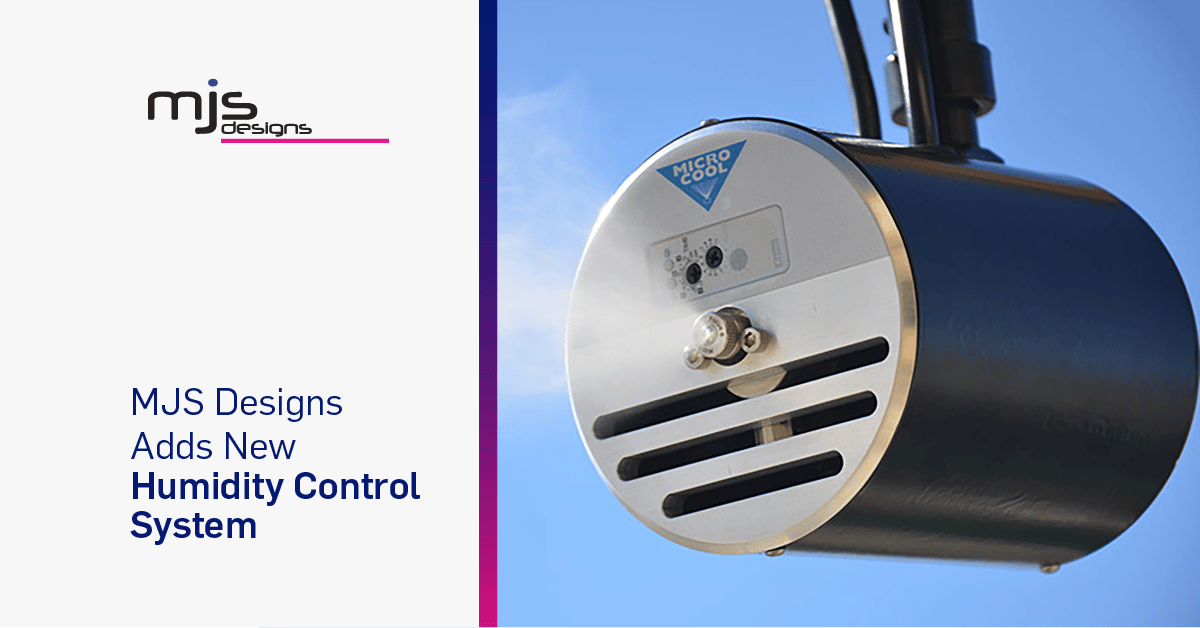As part of our continuing effort to enhance our technical capabilities and meet customer needs, MJS Designs has installed a state-of-the-art Humidity Control System by MicroCool. With the MicroCool Humidity Control System in place, the MJS Designs manufacturing environment satisfies all High Reliability/Aerospace/MIL Humidity standards for Electronic Manufacturers and PCB Assemblers.
MIL-STD-1695 specifies relative humidity levels in the range of 30% to 70% in areas where sensitive electronic parts are handled, processed, or stored. The J-STD-033C and IPC/EIA J-STD-001C specifications provide similar guidance on humidity levels. Ultimately, a relative humidity between 40% to 60% is the recommended standard for critical electronics manufacturing. With the new humidity control system installed, MJS Designs meets these and other specifications that are required by many of MJS Designs’ high-reliability customers.
Humidity Level Requirements for Electronics Manufacturers
One method of effectively preventing excessive charge to build during the printed circuit board assembly process is to carefully control the humidity level. Higher humidity levels help to dissipate static charge buildup on surfaces by providing high-resistance discharge paths. These high resistance discharge paths dissipate static electrical charge slowly, which prevents high voltage ESD (electro-static discharge) events from damaging circuit card assemblies. Studies have shown that humidity levels of up to 70% are effective at preventing high-voltage static charge buildup. Humidification of 40% to 60% RH is a desirable goal. It should be noted that humidity control limits triboelectric charging, but does not eliminate the need for other ESD safeguards; it is merely another tool for ESD mitigation.
At MJS Designs—located in Phoenix, AZ—it was determined that a humidity control system was needed to boost the humidity level and prevent ESD. The goal was to reach a 50% humidity level in the most efficient way possible. To achieve this goal, MJS Designs began to review the commercially available humidity control systems. The humidity control system selection process focused on operating cost, effectiveness, maintenance, expandability, advanced features, ease of use, and purchase price.
Humidity Control System Options
MJS Designs searched for a humidity control system that could accommodate its electronics manufacturing facility. After a thorough review of commercially available humidity control systems, the MicroCool Fog Humidity system was selected to provide the maximum benefit to both MJS Designs and its customers.
The MicroCool system provides the following advantages:
- Energy Efficiency – The system is extremely energy efficient as the pump only runs to maintain pressure in the water line. There are no high-current boiling circuits required to vaporize the water. The system pump is a highly efficient Variable Frequency Drive (VFD) pump that further minimizes energy use.
- Effectiveness – The system provides precise Humidity Control (±3% from setpoint) with the use of three humidity monitoring zones to maintain tight control. Each zone has its own humidity sensor used to verify the humidity level. When a zone detects a low humidity level, the nearby nozzles can immediately produce fog utilizing the constant pressure in the water line. Each electronically controlled nozzle has an integrated fan that pushes fog into all corners of the affected zone.
- Adjustable and Expandable system – The system can easily accommodate new nozzles on the existing water line. Both the spray and orientation of each nozzle can be individually adjusted to optimize humidity levels.
- Advanced Features – The system is self-cleaning using carbon filtering and employs an Ultraviolet (UV) Purge feature that is activated every 24 hours. This UV Purge ensures that the water in the main line is sterilized before it reaches the nozzles. The system is also dripless and features quiet operation.
- Ease of Use – The operator control panels are easy to read and user-friendly. The set-and-forget humidity settings are maintained automatically with no operator intervention needed.
“MJS Designs’ new humidity control and monitoring system is an important addition to our overall ESD control program and shows MJS Designs’ commitment to continuous improvement. It greatly reduces the buildup of static charges on insulated or non-groundable process equipment and significantly reduces the likelihood of an ESD event. This is a vital consideration, especially when handling ESD Class 0 devices,” states David Robbins, Test Technician, and MJS Designs’ resident ESD expert.
ESD Mitigation
ESD is a leading source of product damage in the electronics industry. To combat this problem, MJS Designs is continuously looking for ways to minimize ESD effects during the manufacturing process. As part of this, MJS Designs is ANSI/ESD S.20.20-2014 certified for electro-static discharge. The new Humidity Control System allows MJS Designs to offer its customers electronic products that feature improved reliability, lower component infant mortality, and lower latent failure rates. These important reliability enhancements result in quality assurance for our customers.
MJS Designs continuously invests in new and innovative technologies to ensure our manufacturing environment is world-class. Within the past year, ANSI has released a new certification revision: ANSI/ESD S.20.20-2021. MJS Designs will be certified to this new standard in 2023.
To learn more about how MJS Designs can help drive your success, contact us here.

